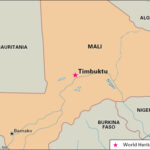Black widow spiders, notorious for their potent venom and distinctive markings, evoke a mixture of fear and fascination. While their reputation precedes them, understanding where black widow spiders live can help in both avoiding unwanted encounters and appreciating these creatures from a safe distance. This article delves into the typical habitats of black widow spiders, providing a comprehensive look at their preferred environments.
Adult female black widow spiders are easily recognizable by their glossy black bodies and the characteristic red hourglass marking on their underside. They can grow up to ½ inch in body length. Male black widows and immature females present a different appearance, often displaying gray to brown coloration with red, orange, or yellow spots and stripes on their abdomen. Despite common misconceptions, male black widows are not always consumed after mating and can sometimes live to mate again. Females, on the other hand, have a longer lifespan, living for three years or more.
Mating rituals of black widows typically occur within or near the female’s web. These webs are irregularly shaped, except for a funnel-shaped section where the female spider usually hides. These webs, spanning about a foot in diameter, are key to understanding where black widow spiders choose to reside.
Black widow spiders are reclusive creatures that prefer dark, undisturbed locations. Their habitat selection is primarily driven by the need for shelter and access to prey. Here are some common places where black widow spiders live:
Natural Habitats:
- Animal Burrows: Abandoned rodent burrows and other animal dens provide ideal protected spaces for black widows. These underground spaces offer darkness, humidity, and protection from predators.
- Under Rocks and Rock Piles: The crevices and undersides of rocks and rock piles offer similar shelter to burrows. These locations are often cool, dark, and secluded, making them attractive to black widows.
Alt text: Black widow spider web nestled in the dark space underneath a rock, illustrating a typical natural habitat.
- Bushes and Shrubs: Dense bushes and shrubs provide a canopy of leaves that create shaded and hidden areas. Black widows may spin their webs within these plants, particularly in areas close to the ground.
- Woodpiles: Piles of firewood or lumber are another favored habitat. The spaces between logs offer darkness and protection, and woodpiles often attract insects, providing a food source for the spiders.
Man-Made Habitats:
Black widow spiders are also adept at utilizing human-made structures for shelter, often leading to encounters in and around homes and buildings.
- Building Foundations: The perimeter around building foundations, especially in cracks and crevices, can harbor black widow webs. These areas are often undisturbed and provide access to the interior of structures.
- Garages and Sheds: Garages, sheds, and other outbuildings are prime locations due to their often cluttered and dimly lit environments. Black widows may build webs in corners, under shelves, or within stored items.
- Basements and Crawl Spaces: Unfinished basements and crawl spaces offer dark, secluded, and often humid conditions that black widows find appealing. Webs can be found along walls, in corners, and among stored items.
- Outdoor Furniture and Equipment: Less frequently used outdoor furniture, gardening equipment, and stored items like tires or flower pots can also become habitats for black widows.
Alt text: Black widow spider webs spun in the corner of a shed, demonstrating their adaptation to man-made structures for habitat.
Egg Sacs and Spiderling Dispersal:
Female black widows produce egg sacs, roughly the size of a large pea, which are often visible within their webs. These sacs can contain over 200 eggs. Once hatched, the spiderlings disperse to new locations through a process called “ballooning.” They release silk threads that catch the wind, allowing them to be carried to new habitats, sometimes several miles away. This method of dispersal contributes to their widespread distribution.
Encountering Black Widows and Bite Prevention:
Despite their venomous reputation, black widow bites are not common. These spiders are not aggressive and prefer to retreat when disturbed. Bites typically occur when a spider is accidentally touched or pressed against something, such as when reaching into their web.
To minimize the risk of encountering black widow spiders and potential bites:
- Wear gloves when gardening, handling firewood, or working in sheds, garages, or basements.
- Be cautious when reaching into dark or secluded areas where black widows might reside.
- Reduce clutter in garages, sheds, and basements to minimize potential hiding spots.
- Seal cracks and crevices in foundations and around windows and doors to prevent spiders from entering buildings.
Understanding where black widow spiders live and taking preventative measures can significantly reduce the chances of encountering these spiders and ensure a safe coexistence with these fascinating, albeit venomous, arachnids. By respecting their space and being mindful of their preferred habitats, we can minimize risks and appreciate their role in the ecosystem from a safe distance.


